Glycine
Synonym(s):Glycine;TG;Aminoacetic acid;2-Aminoacetic acid;TGC
- CAS NO.:56-40-6
- Empirical Formula: C2H5NO2
- Molecular Weight: 75.07
- MDL number: MFCD00008131
- EINECS: 200-272-2
- SAFETY DATA SHEET (SDS)
- Update Date: 2025-12-25 16:13:34

What is Glycine?
Description
Glycine (abbreviated as Gly or G) is an organic compound with the formula NH2CH2COOH. Having a hydrogen substituent as its side-chain, glycine is the smallest of the 20 amino acids commonly found in proteins. Its codons are GGU, GGC, GGA, GGG of the genetic code.
Glycine is a colourless, sweet-tasting crystalline solid. It is unique among the proteinogenic amino acids in that it is not chiral. It can fit into hydrophilic or hydrophobic environments, due to its minimal side chain of only one hydrogen atom. Glycine is also the genus name of the Soybean plant (species name = Glycine max).
Chemical properties
Glycine occurs as a white, odorless, crystalline powder, and has a sweet taste.
Chemical properties
A white, odorless, crystalline powder having a sweetish taste. Its solution is acid to litmus. One g dissolves in about 4 mL of water. It is very slightly soluble in alcohol and in ether. Glycine may be prepared from chloroacetic acid and ammonia; from protein sources, such as gelatin and silk fibroin; from ammonium bicarbonate and sodium cyanide; by catalytic cleavage of serine; from hydrobromic acid and methyleneaminoacetonitrile.
Chemical properties
Glycine is odorless and has a slightly sweet taste.
Occurrence
Gelatin and silk fbroin are reportedly the best natural sources of this amino acid
The Uses of Glycine
In the US, glycine is typically sold in two grades: United States Pharmacopeia (“USP”), and technical grade. Most glycine is manufactured as USP grade material for diverse uses. USP grade sales account for approximately 80 to 85 percent of the U.S. market for glycine.
Pharmaceutical grade glycine is produced for some pharmaceutical applications, such as intravenous injections, where the customer’s purity requirements often exceed the minimum required under the USP grade designation. Pharmaceutical grade glycine is often produced to proprietary specifications and is typically sold at a premium over USP grade glycine.
Technical grade glycine, which may or may not meet USP grade standards, is sold for use in industrial applications; e.g., as an agent in metal complexing and finishing. Technical grade glycine is typically sold at a discount to USP grade glycine.
Animal and human foods
Other markets for USP grade glycine include its use an additive in pet food and animal feed. For humans, glycine is sold as a sweetener/taste enhancer. Certain food supplements and protein drinks contain glycine. Certain drug formulations include glycine to improve gastric absorption of the drug.
Cosmetics and miscellaneous applications
Glycine serves as a buffering agent in antacids, analgesics, antiperspirants, cosmetics, and toiletries.
Many miscellaneous products use glycine or its derivatives, such as the production of rubber sponge products, fertilizers, metal complexants.
Chemical feed stock
Glycine is an intermediate in the synthesis of a variety of chemical products. It is used in the manufacture of the herbicide glyphosate. Glyphosate is a non-selective systemic herbicide used to kill weeds, especially perennials and broadcast or used in the cutstump treatment as a forestry herbicide.
The Uses of Glycine
Glycine is a nonessential amino acid that functions as a nutrient and dietary supplement. it has a solubility of 1 g in 4 ml of water and is abundant in collagen. it is used to mask the bitter aftertaste of sac- charin, for example, in artificially sweetened soft drinks. it retards rancidity in fat.
The Uses of Glycine
Glycine is a non-essential amino acid for human development. Glycine is an inhibitory neurotransmitter in spinal cord, allosteric regulator of NMDA receptors.
The Uses of Glycine
Non-essential amino acid for human development. An inhibitory neurotransmitter in spinal cord, allosteric regulator of NMDA receptors.
The Uses of Glycine
glycine is an amino acid used as a texturizer in cosmetic formulations. It makes up approximately 30 percent of the collagen molecule.
Definition
ChEBI: The simplest (and the only achiral) proteinogenic amino acid, with a hydrogen atom as its side chain.
Indications
Supplemental glycine may have antispastic activity. Very early findings suggest it may also have antipsychotic activity as well as antioxidant and anti-inflammatory activities.
Background
A non-essential amino acid. It is found primarily in gelatin and silk fibroin and used therapeutically as a nutrient. It is also a fast inhibitory neurotransmitter.
Production Methods
Chemical synthesis is the most suitable method of preparation of glycine. Amination of chloroacetic acid and the hydrolysis of aminoacetonitrile are the favored methods of production.
Production Methods
Glycine was discovered in 1820, by Henri Braconnot who boiled gelatin with sulfuric acid.
Glycine is manufactured industrially by treating chloroacetic acid with ammonia :
ClCH2COOH + 2 NH3→H2NCH2COOH + NH4Cl
About 15 million kg are produced annually in this way.
In the USA (by GEO Specialty Chemicals, Inc.) and in Japan (by Shoadenko), glycine is produced via the Strecker amino acid synthesis.
Preparation
From chloroacetic acid and ammonia; from protein sources, such as gelatin and silk fbroin; from ammonium bicarbonate and sodium cyanide; by catalytic cleavage of serine; from hydrobromic acid and methyleneaminoacetonitrile.
Biosynthesis
Glycine is not essential to the human diet, as it is biosynthesized in the body from the amino acid serine, which is in turn derived from 3-phospho glycerate. In most organisms, the enzyme Serine hydroxy methyl transferase catalyses this transformation via the cofactor pyridoxal phosphate :
serine + tetra hydro folate → glycine +N5,N10-Methylene tetrahydrofolate + H2O
In the liver of vertebrates, glycine synthesis is catalyzed by glycine synthase (also called glycine cleavage enzyme). This conversion is readily reversible : CO2 + NH4+ + N5,N10-Methylene tetra hydro folate + NADH + H+→ Glycine + tetrahydrofolate +NAD+
Glycine is coded by codons GGU, GGC, GGA and GGG. Most proteins incorporate only small quantities of glycine. A notable exception is collagen, which contains about 35 % glycine.
Biotechnological Production
Glycine is manufactured exclusively by chemical synthesis, and two main processes
are practiced today. The direct amination of chloroacetic acid
with a large excess of ammonia gives good yields of glycine without producing
large amounts of di- and trialkylated products. This process is widely used in
China, where the main application of the glycine is as a raw material for the
herbicide glyphosate.
The other main process is the Strecker synthesis. The direct Strecker reaction of
formaldehyde and ammonium cyanide produces methylene amino acetonitrile,
which must be hydrolyzed in two stages to produce glycine . A more efficient
approach is to aminate the intermediate glycolonitrile, followed by hydrolysis].
An alternative method, which is more often applied for the homologous amino
acids, is the Bucherer–Bergs reaction. Reaction of formaldehyde and ammonium
carbonate or bicarbonate gives the intermediate hydantoin, which can be hydrolyzed
to glycine in a separate step.
Biological Functions
Glycine is another inhibitory CNS neurotransmitter. Whereas GABA is located primarily in the brain, glycine is found predominantly in the ventral horn of the spinal cord. Relatively few drugs are known to interact with glycine; the best-known example is the convulsant agent strychnine, which appears to be a relatively specific antagonist of glycine.
Biological Functions
The principal function of glycine is as a precursor to proteins. It is also a building block to numerous natural products.
As a biosynthetic intermediate
In higher eukaryotes, D-Aminolevulinic acid, the key precursor to porphyrins, is biosynthesized from glycine and succinyl-CoA. Glycine provides the central C2N subunit of all purines.
As a neurotransmitter
Glycine is an inhibitory neurotransmitter in the central nervous system, especially in the spinal cord, brainstem, and retina. When glycine receptors are activated, chloride enters the neuron via ionotropic receptors, causing an Inhibitory postsynaptic potentia (IPSP). Strychnine is a strong antagonist at ionotropic glycine receptors, whereas bicuculline is a weak one. Glycine is a required coagonist along with glutamate for NMDA receptors. In contrast to the inhibitory role of glycine in the spinal cord, this behaviour is facilitated at the (NMDA) glutaminergic receptors which are excitatory. The LD50 of glycine is 7930 mg / kg in rats (oral), and it usually causes death by hyperexcitability. .
General Description
White crystals.
Air & Water Reactions
Water soluble.
Reactivity Profile
An amino acid. A 0.2M aqueous solution has a pH of 4.0., so acts as a weak acid. Has characteristics of both acid and base.
Hazard
Use in fats restricted to 0.01%.
Fire Hazard
LOW. Ignites at very high temperatures.
Agricultural Uses
Glycine is the simplest naturally occurring amino acid and is a constituent of most proteins. Its formula is H2N·CH2·COOH.
Pharmaceutical Applications
Glycine is routinely used as a cofreeze-dried excipient in protein
formulations owing to its ability to form a strong, porous, and
elegant cake structure in the final lyophilized product. It is one
of the most frequently utilized excipients in freeze-dried injectable
formulations owing to its advantageous freeze-drying properties.
Glycine has been investigated as a disintegration accelerant in
fast-disintegrating formulations owing to its excellent wetting
nature.It is also used as a buffering agent and conditioner in
cosmetics.
Glycine may be used along with antacids in the treatment of
gastric hyperacidity, and it may also be included in aspirin
preparations to aid the reduction of gastric irritation.
Biological Activity
One of the major inhibitory neurotransmitters in the mammalian CNS, predominantly active in the spinal cord and brain stem. Also acts as a modulator of excitatory amino acid transmission mediated by NMDA receptors. Also available as part of the NMDA Receptor - Glycine Site Tocriset™ .
Biochem/physiol Actions
Glycine has a pivotal role in lowering the plasma lipid levels in diabetic and obese patients by activating the CNS. During brain hypoxia glycine can stabilize the energetics disturbances in brain mitochondria. It also increases the in vitro development of porcine blastocysts when used along with glucose.
Pharmacokinetics
Helps trigger the release of oxygen to the energy requiring cell-making process; Important in the manufacturing of hormones responsible for a strong immune system.
Absorption
Absorbed from the small intestine via an active transport mechanism.
Safety Profile
Moderately toxic by intravenous route. Mildly toxic by ingestion. Mutation data reported. When heated to decomposition it emits toxic fumes of NOx.
Safety
Glycine is used as a sweetener, buffering agent, and dietary
supplement. The pure form of glycine is moderately toxic by the
IV route and mildly toxic by ingestion.
Systemic absorption of glycine irrigation solutions can lead to
disturbances of fluid and electrolyte balance and cardiovascular and
pulmonary disorders.
LD50 (mouse, IP): 4.45 g/kg
LD50 (mouse, IV): 2.37 g/kg
LD50 (mouse, oral): 4.92 g/kg
LD50 (mouse, SC): 5.06 g/kg
LD50 (rat, IV): 2.6 g/kg
LD50 (rat, oral): 7.93 g/kg
LD50 (rat, SC): 5.2 g/kg
Toxicity
ORL-RAT LD50 7930 mg/kg, SCU-RAT LD50 5200 mg/kg, IVN-RAT LD50 2600 mg/kg, ORL-MUS LD50 4920 mg/kg; Doses of 1 gram daily are very well tolerated. Mild gastrointestinal symptoms are infrequently noted. In one study doses of 90 grams daily were also well tole.
Metabolism
Hepatic
Storage
Glycine starts to decompose at 233°C. Store in well-closed containers. Glycine irrigation solutions (95–105% glycine) should be stored in single dose containers, preferably type I or type II glass.
Purification Methods
Crystallise glycine from distilled water by dissolving at 90-95o, filtering, cooling to about -5o, and draining the crystals centrifugally. Alternatively, crystallise it from distilled water by addition of MeOH or EtOH (e.g. 50g dissolved in 100mL of warm water, and 400mL of MeOH is added). The crystals are washed with MeOH or EtOH, then with diethyl ether. Likely impurities are ammonium glycinate, iminodiacetic acid, nitrilotriacetic acid or/and ammonium chloride. [Greenstein & Winitz The Chemistry of the Amino Acids J. Wiley, Vol 3 p 1955 1961, Beilstein 4 IV 2349.]
Degradation
Glycine is degraded via three pathways. The predominant pathway in animals and plants involves the glycine cleavage enzyme Glycine + tetra hydro folate + NAD+ → CO2 + NH4+ + N5,N10-Methylene tetra hydrofolate + NADH + H+ In the second pathway, glycine is degraded in two steps. The first step is the reverse of glycine biosynthesis from serine with serine hydroxymethyl transferase. Serine is then converted to pyruvate by serine dehydratase. In the third pathway of glycine degradation, glycine is converted to glyoxylate by D-amino acid oxidase. Glyoxylate is then oxidized by hepatic lactate dehydrogenase to oxalate in an NAD+-dependent reaction. The half-life of glycine and its elimination from the body varies significantly based on dose. In one study, the half-life was between 0.5 and 4.0 hours.
Presence in space
The detection of glycine in the interstellar medium has been debated . In 2008, the glycine - like molecule amino aceto nitrile was discovered in the Large Molecule Heimat, a giant gas cloud near the galactic center in the constellation Sagittarius by the Max Planck Institute for Radio Astronomy . In 2009, glycine sampled in 2004 from comet Wild 2 by the NASA spacecraft Stardust was confirmed, the first discovery of extraterrestrial glycine. That mission's results bolstered the theory of panspermia, which claims that the "seeds" of life are widespread throughout the universe.
Incompatibilities
Glycine may undergo Maillard reactions with amino acids to produce yellowing or browning. Reducing sugars will also interact with secondary amines to form an imine, but without any accompanying yellow-brown discoloration.
Regulatory Status
GRAS listed. Accepted for use as a food additive in Europe. Included in the FDA Inactive Ingredients Database (IM, IV, SC injections; oral; rectal) and approved for irrigant solutions. Included in parenteral (powders for injection; solutions for injection; vaccines; kits for implant) and nonparenteral (orodispersible tablets/oral lyophilizate; powders for inhalation; powders for oral solution; tablets) formulations licensed in the UK.
Properties of Glycine
| Melting point: | 240 °C (dec.) (lit.) |
| Boiling point: | 233°C |
| Density | 1.595 |
| vapor pressure | 0.0000171 Pa (25 °C) |
| refractive index | 1.4264 (estimate) |
| FEMA | 3287 | GLYCINE |
| Flash point: | 176.67°C |
| storage temp. | 2-8°C |
| solubility | H2O: 100 mg/mL |
| form | powder |
| pka | 2.35(at 25℃) |
| color | <5 (200 mg/mL)(APHA) |
| PH | 4(0.2 molar aqueous solution) |
| Odor | Odorless |
| PH Range | 4 |
| Water Solubility | 25 g/100 mL (25 ºC) |
| λmax | λ: 260 nm Amax: 0.05 λ: 280 nm Amax: 0.05 |
| JECFA Number | 1421 |
| Merck | 14,4491 |
| BRN | 635782 |
| Stability: | Stable. Combustible. Incompatible with strong oxidizing agents. |
| CAS DataBase Reference | 56-40-6(CAS DataBase Reference) |
| NIST Chemistry Reference | Glycine(56-40-6) |
| EPA Substance Registry System | Glycine (56-40-6) |
Safety information for Glycine
| Signal word | Warning |
| Pictogram(s) |
 Exclamation Mark Irritant GHS07 |
| GHS Hazard Statements |
H315:Skin corrosion/irritation H319:Serious eye damage/eye irritation H335:Specific target organ toxicity, single exposure;Respiratory tract irritation |
| Precautionary Statement Codes |
P261:Avoid breathing dust/fume/gas/mist/vapours/spray. P271:Use only outdoors or in a well-ventilated area. P280:Wear protective gloves/protective clothing/eye protection/face protection. |
Computed Descriptors for Glycine
| InChIKey | DHMQDGOQFOQNFH-UHFFFAOYSA-N |
Glycine manufacturer
New Products
4,4-Difluoropiperidine hydrochloride tert-butyl 9-methoxy-3-azaspiro[5.5]undecane-3-carboxylate Indole Methyl Resin N-Isopropylurea N,N-Dicyclohexylcarbodiimide(DCC) MELDRUMS ACID 5-METHYLISOXAZOLE-4-CARBOXYLIC ACID Magnessium Bis glycinate Zinc ascorbate 1-bromo-2-butyne 2-acetamidophenol 9(10H)-anthracenone Erythrosin B, 4-Piperidinopiperidine 2-((4-morpholinophenylamino) (methylthio) methylene) malononitrile 2,4-dihydroxybenzaldehyde 3-(4-morpholinophenylamino)-5-amino-1H-pyrazole-4-carbonitrile Methyl 2-methylquinoline-6-carboxylate 2,6-dichloro-4-nitropyridine 4-Bromo-2-chlorobenzonitrile 2-(benzylamino)acetic acid hydrochloride 4-(tert-Butoxycarbonylamino)but- 2-ynoic acid 3,4-dihydro-2H-benzo[b][1,4]dioxepine 1-Phenyl-1-cycloprppanecarboxylicacidRelated products of tetrahydrofuran

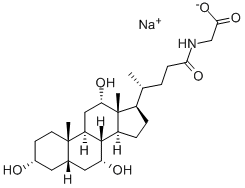

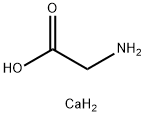
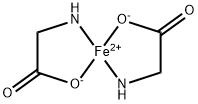
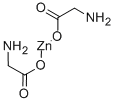
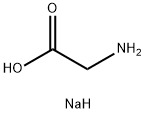

You may like
-
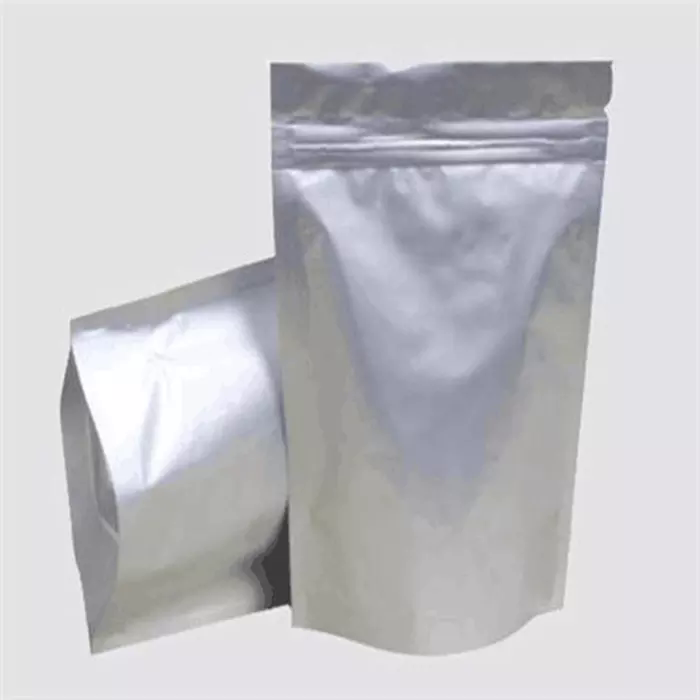 Glycine 98%View Details
Glycine 98%View Details -
 Glycine USP 99%View Details
Glycine USP 99%View Details -
 Glycine 99%View Details
Glycine 99%View Details -
 Glycine CAS 56-40-6View Details
Glycine CAS 56-40-6View Details
56-40-6 -
 Glycine CAS 56-40-6View Details
Glycine CAS 56-40-6View Details
56-40-6 -
 Glassy carbon spherical powder CAS 56-40-6View Details
Glassy carbon spherical powder CAS 56-40-6View Details
56-40-6 -
 Glycine CAS 56-40-6View Details
Glycine CAS 56-40-6View Details
56-40-6 -
 Industrial GlycineView Details
Industrial GlycineView Details
1066-33-7
